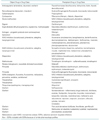Abstract
Drug-drug interaction (DDI) is defined as a change in effect or safety of a drug by another co-administered drug. The fact that more than half of the market withdrawal cases for the past ten years was caused by potentially fatal DDI's demonstrates its clinical importance. The mechanism of DDI can be categorized into pharmacokinetic and pharmacodynamic interactions. Most of the clinically important drug interactions are caused by inhibition or induction of oxidative metabolism by cytochrome P450 (CYP) isozymes. Recent researches are also focusing on drug transporter interactions as another significant factor underlying DDI's. It is hard to prevent unexpected or rare DDI's. However, most of the cases of DDI occur from an erroneous prescription of drugs that are already known to result in deleterious interactions. To avoid such well-established DDI's, physicians are first recommended to utilize hands-on summary tables for CYP substrates before prescribing. It should also be remembered that old age, polypharmacy and damaged hepatic or renal function are risk factors of DDI as well as adverse drug reactions. Moreover, patients treated with drugs with a narrow therapeutic index (immunosuppressants, antiarrhythmics, anticoagulants, digoxin, theophylline etc) deserve a special consideration when their prescriptions are changed. In Korea, the clinical significance of DDI has been underemphasized. The fundamental prescription to this old prescription habit is to teach medical students and physicians clinical pharmacology and therapeutics, which have long been neglected in Korea.
Figures and Tables
Figure 1
An example of informative web sites for CYP-related drug interactions(http://medicine.iupui.edu/flockhart/table.htm)

References
1. Monahan BP, Ferguson CL, Killeavy ES, Lloyd BK, Troy J, Cantilena LR Jr. Torsades de pointes occurring in association with terfenadine use. JAMA. 1990. 264:2788–2790.

2. Lazarou J, Pomeranz BH, Corey PN. Incidence of adverse drug reactions in hospitalized patients: a meta-analysis of prospective studies. JAMA. 1998. 279:1200–1205.

3. Ernst FR, Grizzle AJ. Drug-related morbidity and mortality: updating the cost-of-illness model. J Am Pharm Assoc. 2001. 41:192–199.

4. Jankel CA, Fitterman LK. Epidemiology of drug-drug interactions as a cause of hospital admissions. Drug Saf. 1993. 9:51–59.





 PDF
PDF ePub
ePub Citation
Citation Print
Print



 XML Download
XML Download